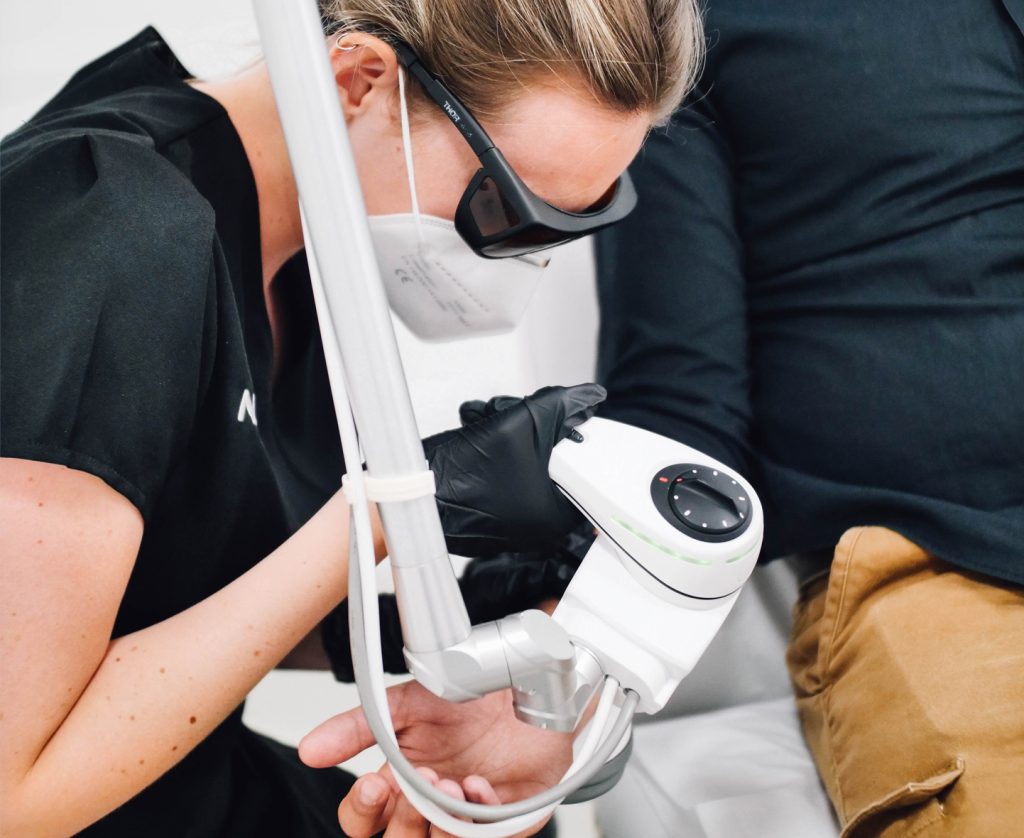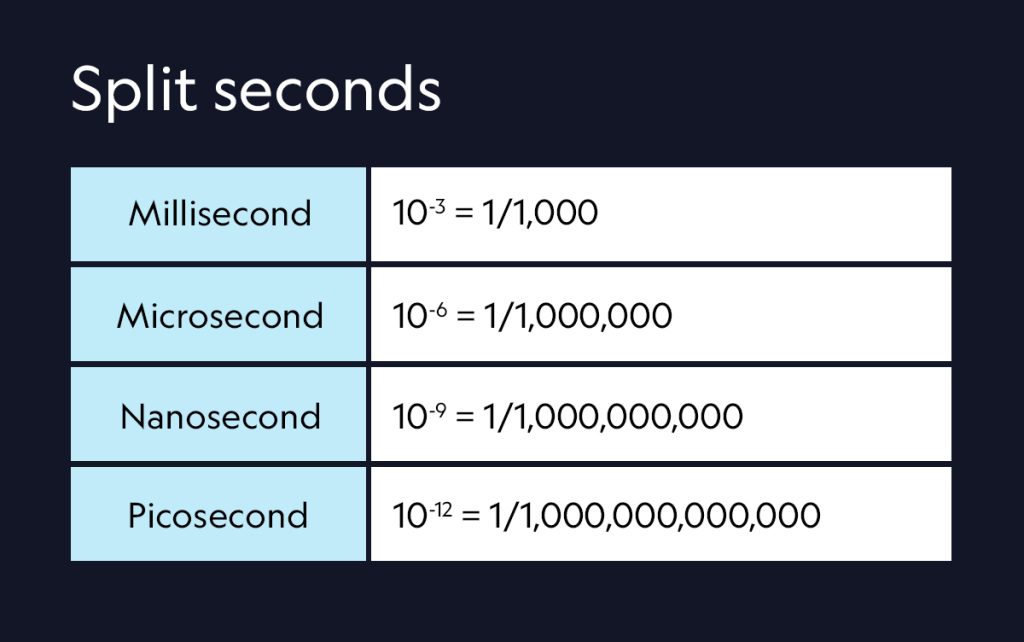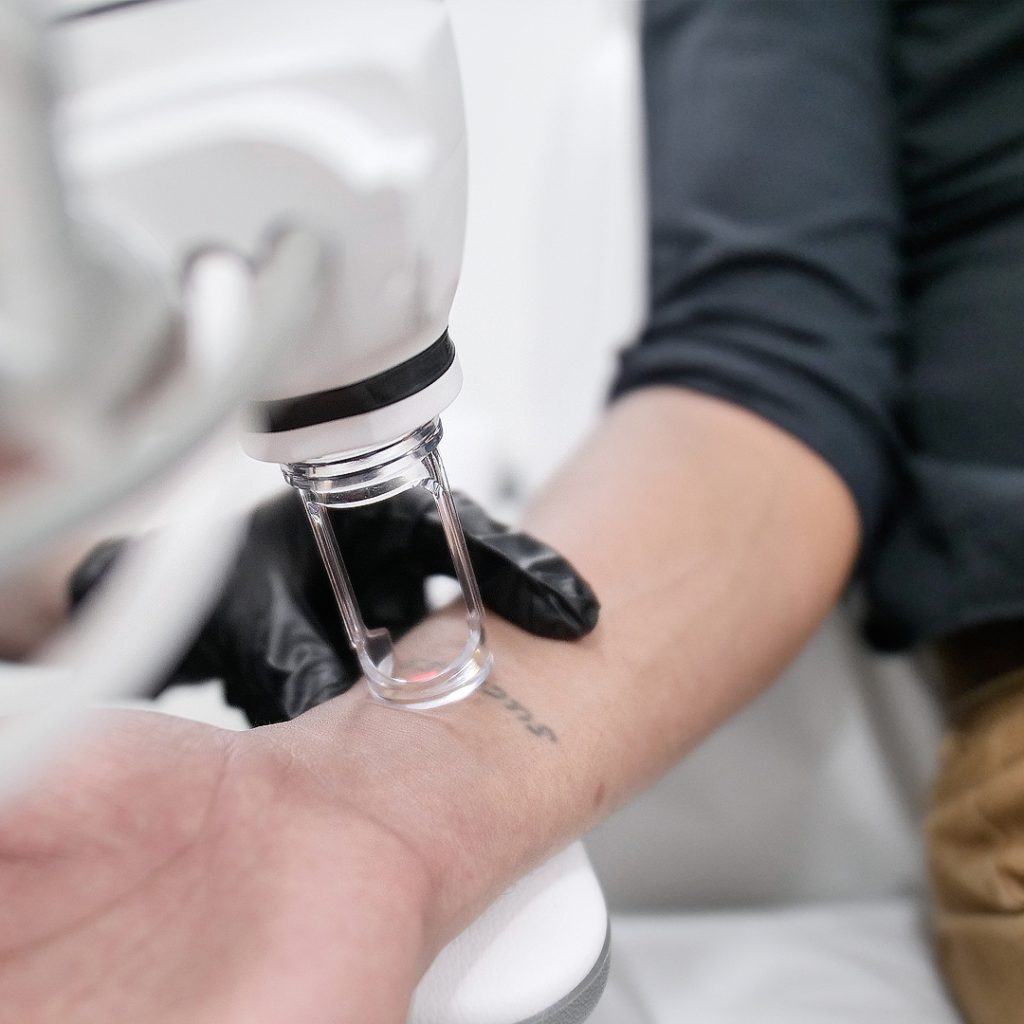There are different types of machines for laser tattoo removal, all of which sit on a timeline pointing towards the current fastest lasers in terms of pulse duration measured in picoseconds.
The LightSense™ laser system is at the forefront of this technology.
In order to explain why pulse duration matters so much to the growing number of clients opting for the LightSense™ laser system above all other technologies, we should examine the measurements associated with laser tattoo removal.
In this blog you’ll find a simple answer to the questions:
The word ‘picosecond’ refers to a measurement of time; specifically the duration of the laser’s pulse, or in other words, how long the flash of light is on for.
It is a crucial measurement for understanding the intricate mechanisms behind laser tattoo removal.
Put simply, the LightSense™ laser system is a type of picosecond laser because it delivers pulses of light in a matter of picoseconds.

At an incredibly short burst of just eight picoseconds, the duration of the LightSense™ laser system's pulse is 89 times shorter than the average Pico laser, and 3000 times shorter than the average Nano Q-Switch laser.
This means a number of things, the most important being that the client’s skin is exposed to the laser for as short an amount of time as possible.
Picoseconds to seconds

In the 1960s scientists across the globe adopted the system of SI units (the International System of Units).
The units measuring tiny segments of time consist of different prefixes each denoting fractions of a second.
Prefixes not included in our chart include femto, atto, zepto, and yocto, the last of which measures quadrillionths of a second (on the long scale).
When targeted accurately with the LightSense™ laser system, the ink pigment that has been deposited in the dermis of the skin becomes heated by the pulses of light. This causes the pigment to break apart so it can be flushed out by the body’s natural immune system.
The process works a bit like ripping off a plaster, if you do it quickly it hurts much less.
The process is not quite as straightforward as explained thus far, partly because the laser may also generate a photoacoustic effect that causes cracks in the particles of ink.
Further to this, there is a growing body of research that suggests that the mechanism by which the body’s macrophages engulf the ink pigment - because they cannot fight off the attack on the immune system, they contain it through a process called phagocytosis - is a lot more dynamic than has previously been understood.
Specifically, an article in the Journal of Experimental Medicine documents how tattoo ink on the skin of mice behaves in a much more dynamic way than has previously been understood.

“The physics of laser removal is remarkable”
Monty Lyman
On being tattooed, the skin’s macrophages spring into action.
Detecting the ink pigment as foreign, they attempt to consume it; but they cannot consume it all and so some of the ink remains inside of them.
Monty Lyman likens it to an “infinite infection” in his book The Remarkable Life of the Skin.
As the initial ink-filled macrophages die, pigment is released and then engulfed again by subsequent macrophages.
This process is ongoing throughout the lifecycle of a tattoo, that is, until the laser disrupts it.
Once the laser has broken down the ink particles into smaller chunks the macrophages are then able to flush them out of the skin over the next few days.
To return to picoseconds, the LightSense™ laser system disrupts this dynamic biology with extremely short pulses of light. Once accurately targeted, the macrophages are able to do their work as an integral part of the body’s natural immune system.


